Bees are in big trouble. The good news is that virtually all ecologically literate North Americans will tell you that. The bad news is they’re worried about the wrong bees — honey bees.
Honey bees don’t belong in North America; they’re domesticated aliens from Europe. “Worrying about their extinction is like worrying about the extinction of cattle,” declares native-bee activist and acclaimed wildlife photographer Clay Bolt.
But North America could lose many of its roughly 4,000 native bee species. For example, applying criteria of the International Union for Conservation of Nature, the Xerces Society for Invertebrate Conservation reports that of the 46 indigenous bumble bee species in the U.S. and Canada 28 percent are at some risk of extinction.
While bumble bees aren’t well understood, they’re well loved. They are so good-natured that getting a female to sting you (males can’t) is a major undertaking. Proceed carefully and you can even stroke her Teddy-bear-like fur. That fur, along with ability to regulate body temperature, allows bumble bees to be out and about on cold mornings long before honey bees rev up. Bumble bees have even been seen 1,055 miles north of the Arctic Circle.
In late winter while most insects are dormant or unhatched, queen bumble bees, the biggest bees you’ll see all year, start searching for nest sites. The queen’s flight is not wild and erratic as Rimsky-Korsakov’s operatic score implies, but slow, low and deliberate. Frequently she’ll select an abandoned rodent hole, camouflage it with leaves, moss or grass, then fashion a wax pot and fill it with honey. Finally, she’ll knead pollen into “bee bread.” The honey will sustain her while she’s brooding the year’s new colony. The bee bread will nourish the larvae.
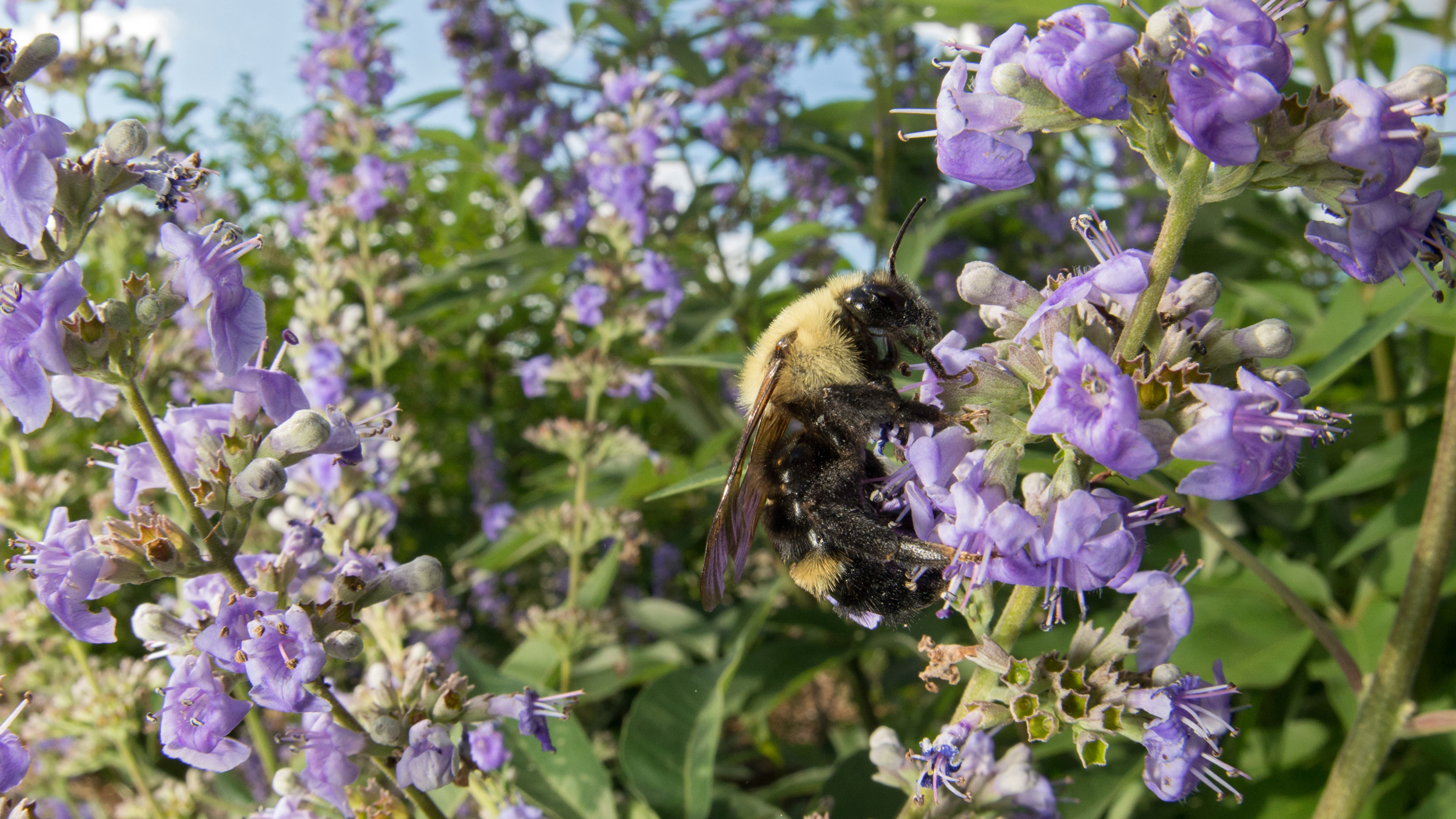
Six of the continent’s bumble bee species are cowbird-like brood parasites; queens lay eggs in nests of other bumble bees and let the workers rear their young.
Honey bees are far from the main threat to bumble bees; but they compete with them thus reducing their reproduction and body size. And while both honey bees and bumble bees are important pollinators, bumble bees are frequently more efficient. Unlike honey bees, they can “buzz pollinate,” seizing a flower in their jaws and forelegs and vibrating their wing muscles to shake pollen from the anther. This ability makes bumble bees important for pollinating a wide variety of wild and cultivated plants. Bumble bees help sustain all manner of things prized by humans from tomatoes to grizzly bears.
The wildlife management establishment has traditionally ignored native bees. But that’s starting to change thanks to bee advocates led by the Xerces Society, Clay Bolt, Dr. Sydney Cameron of the University of Illinois and Dr. Robbin Thorp of the University of California at Davis.
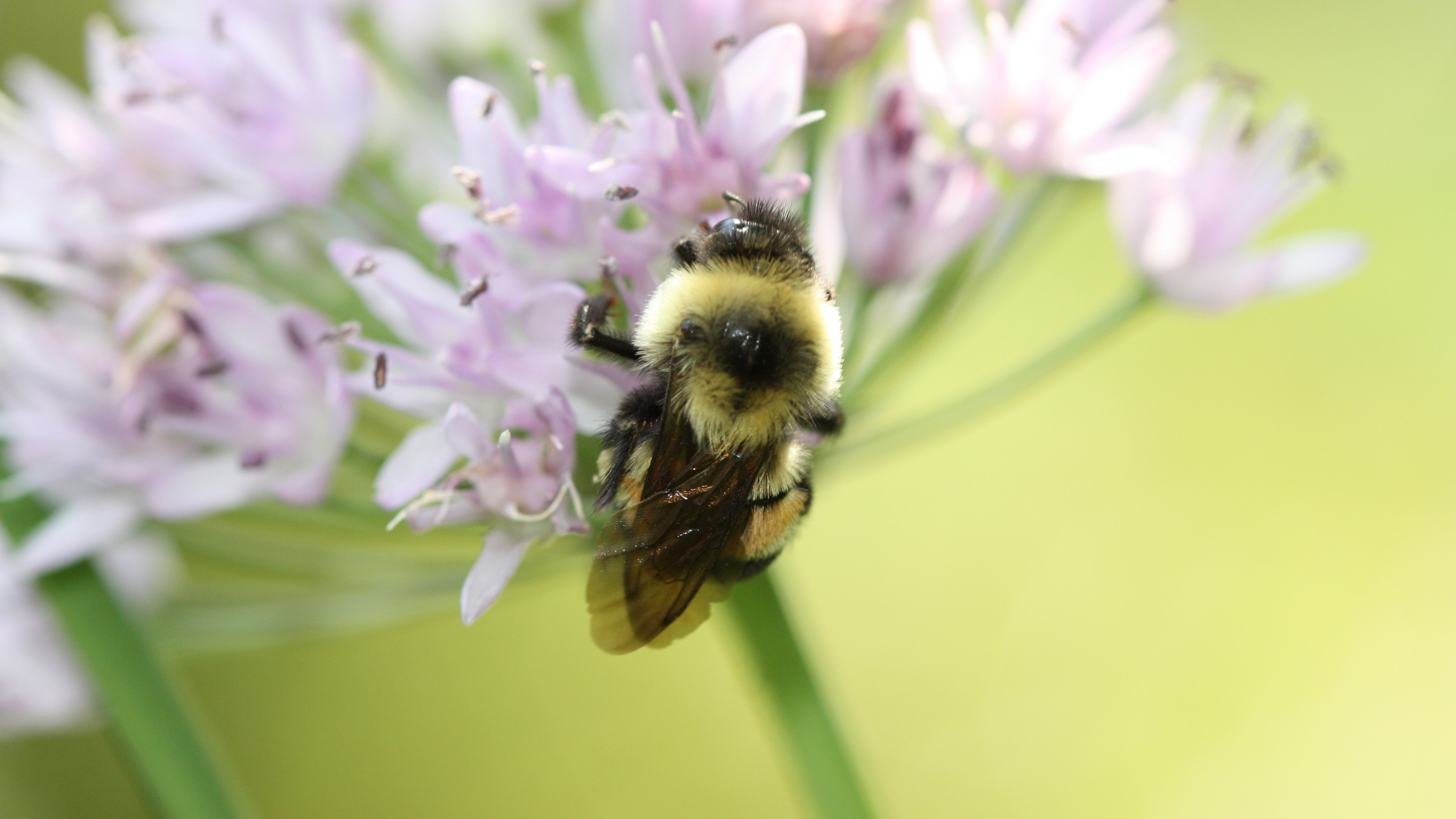
On March 22, 2017 the rusty patched bumble bee became the first bee in the continental U.S. to be listed as endangered by the U.S. Fish and Wildlife Service. The publicity is awakening managers and the public to the importance of native bees. In addition to sustaining native ecosystems they provide pollination services to American farmers worth $9 billion per year. “The listing of the rusty patched bumble bee has the potential to become a landmark case for pollinator protection,” remarks Bolt.
Rousting the feds to action was a challenge. The process started in 2010 when the Xerces Society, the Natural Resources Defense Council, Defenders of Wildlife and Thorp, alarmed about the rapid spread of bee diseases and parasites, petitioned the Animal and Plant Health Inspection Service (APHIS) to regulate interstate transport of bumble bees commercially bred for greenhouse pollination. APHIS didn’t respond for almost four years, then declined to do anything significant.
In 2013 the Xerces Society petitioned the Fish and Wildlife Service to list the rusty patched bumble bee as endangered. By law the agency has 90 days to decide if a petition for listing has merit. Nine hundred days later it hadn’t made a decision. Eventually a Xerces lawsuit elicited action.
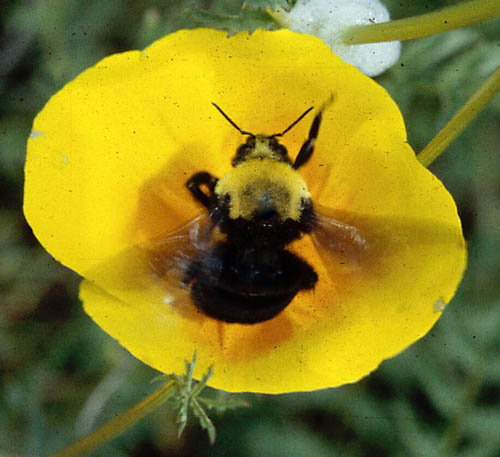
Interstate commerce of the eastern bumble bee is still essentially unregulated; and it has apparently imperiled American, yellow-banded, western and rusty patched bumble bees and caused the probable extinction of the Franklin’s bumble bee which hasn’t been seen since Thorp observed it in 2006. All five species were common 20 years ago.
At least APHIS forbids importation of bees from other nations except Canada, but between 1992 and 1994 it permitted western and eastern bumble bee queens to be shipped to Europe for rearing and their colonies to be distributed throughout North America. While the bumble bee fungal disease Nosema bombi is apparently native to North America, Thorp hypothesizes that a more virulent strain was introduced by the foreign-bred colonies. But Dr. Sydney Cameron could find virtually no observable difference between native and European Nosema. She suggests that commercial colonies might have had higher prevalence of Nosema, which spread to wild populations.
In any case, the sudden demise of the five common bumble bees — which, save for the American bumble bee, are closely related — corresponds precisely with bumble-bee commercialization in North America. I asked Thorp if pesticides, known to devastate bees, might have been partly responsible. “That doesn’t make sense,” he said, “because other bumble bee species in the same areas are doing well.” Of course, pesticides could weaken more vulnerable species, enhancing risks of infection. Cameron’s lab is investigating that potential.
In addition to Nosema, commercial bumble bee colonies in the U.S. have repeatedly been found to carry such wild-bee-afflicting parasites and pathogens as external mites, gut mites, gut protozoa, deformed-wing virus, black queen cell virus, sac brood virus and Israeli acute paralysis virus.
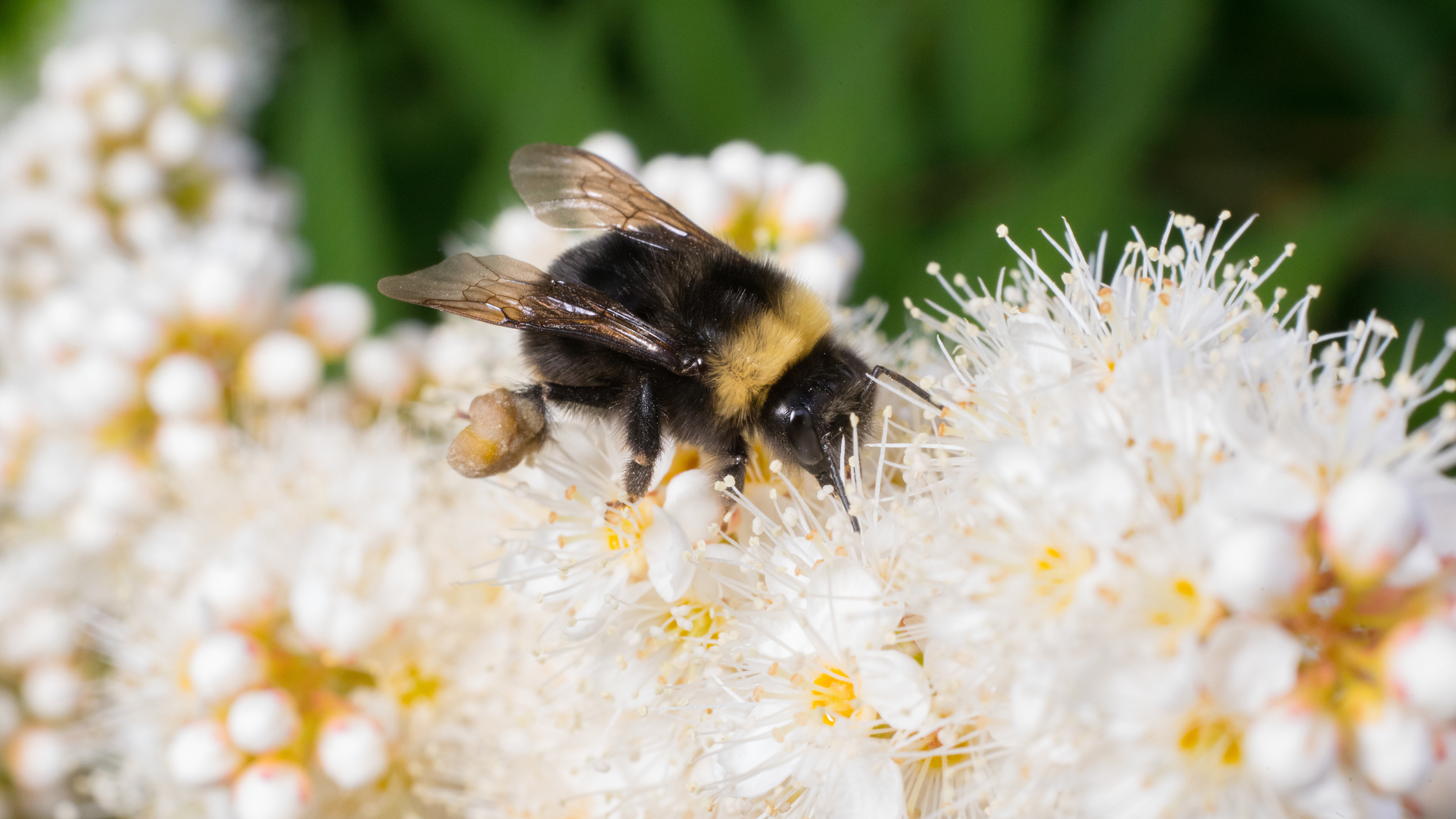
Every year in nations around the world millions of commercially produced bumble bee colonies are imported to pollinate greenhouse plants. They easily escape. In Argentina and Chile buff-tailed bumble bees imported from Europe are driving the beautiful, orange-furred flying mouse, the world’s largest bumble bee, toward extinction. Wherever the alien shows up the native vanishes.
Pesticides, especially neonicotinoids, are doing a number on native bees and honey bees. In the 1990s chemical companies, under pressure to develop safer pesticides for birds and mammals, hatched poisons that could be applied to seeds. These neonicotinoids were indeed less toxic to birds and mammals, but because they’re water soluble and absorbed into pollen they’re deadly for bees and other pollinators. They’re the default pesticide for soybeans and corn, yet research has shown them to be ineffective. One three-year study revealed zero corn yield benefit from neonicotinoid seed treatments. Similar results have been seen for soy.
Europe has sharply limited neonicotinoid use, and Canada is in the process of doing so. But our Environmental Protection Agency has yet to act. Last May the U.S. District Court for Northern California ruled that the agency had violated the Endangered Species Act by not adequately reviewing 59 neonicotinoid registrations.
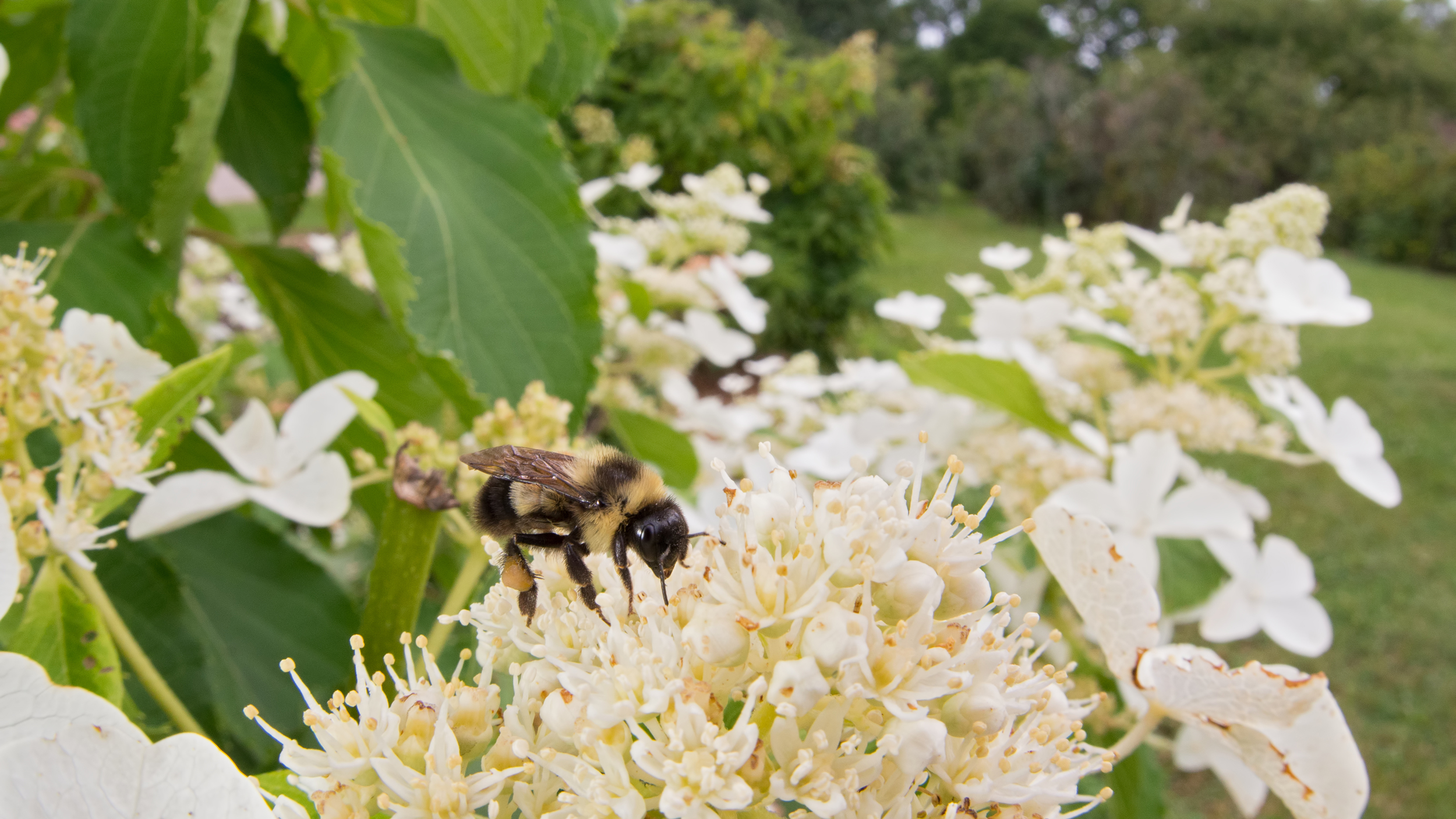
While the EPA has recently published preliminary pollinator-only risk assessments for three neonicotinoids and will be collecting public comments until July 24, the regulation process is slow. Critiquing that process, Aimee Code, who directs the pesticide program for the Xerces Society, notes that EPA gets its information from the companies that make the pesticides. “We’re not expecting final decisions for another couple years,” she says. “And EPA’s assessments are focused on only honey bees and thus fail to protect the more sensitive bumble bees. While a honey bee queen doesn’t forage, the bumble bee queen does, putting her at risk of pesticide exposure. If the queen is killed, the colony is lost.”
On June 23 a bill to better regulate neonicotinoid use — Saving America’s Pollinators Act of 2017 — was introduced in the House by 30 cosponsors.
While the feds aren’t doing much to recover native bees, there’s a great deal the public can do. Native bees need only three things — flowers, nesting sites and a pesticide-free environment. Provide these, and they will come.
How You Can Help Native Bees
To learn what to plant for native bees check out the Xerces Society’s Pollinator Resource Center.
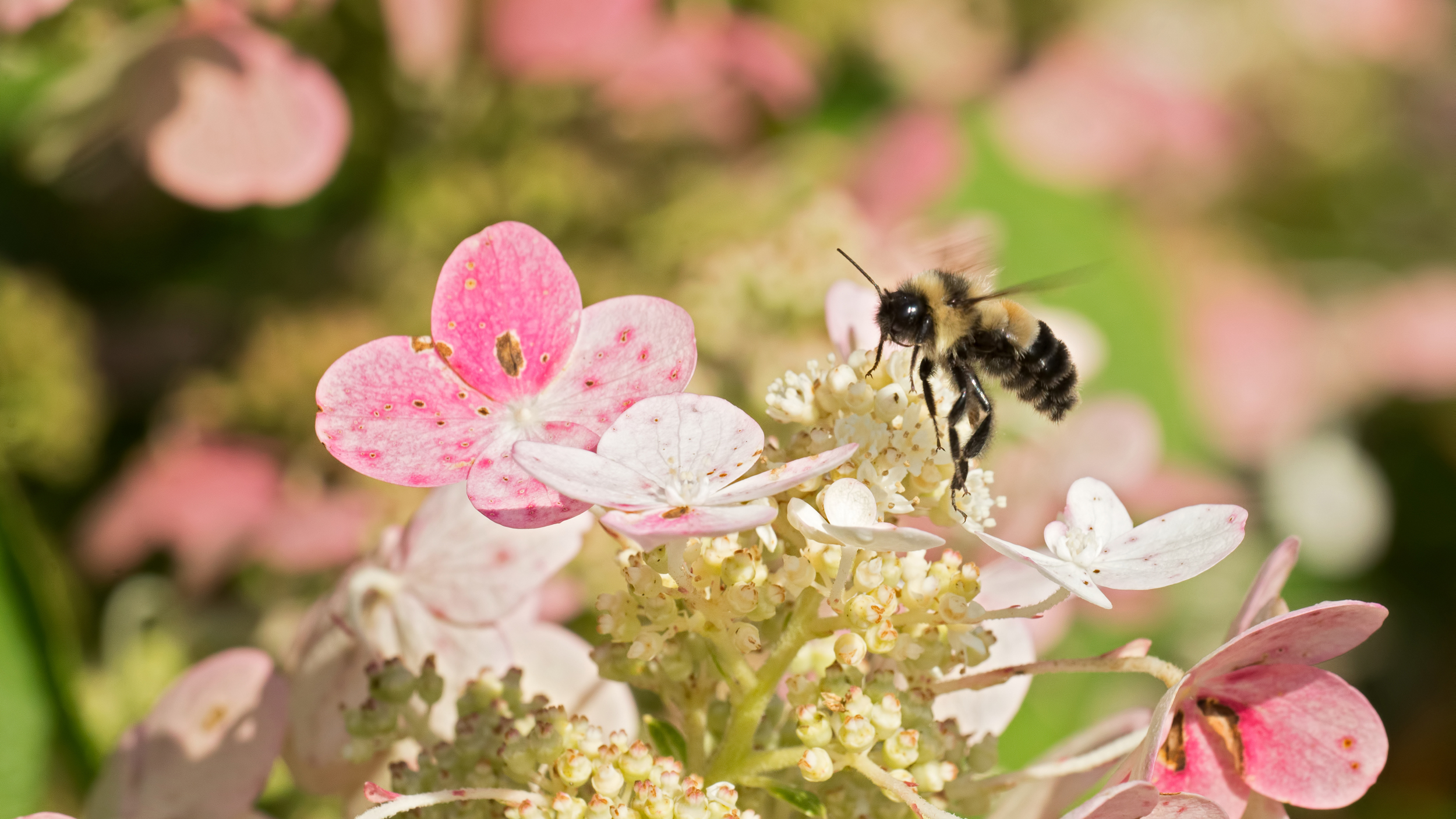
You destroy bumble-bee nests sites by mowing, so let part of your yard go back to nature. When you do mow leave lawn clippings in an out-of-the-way pile; some bumble bee species will nest there.
If you want predator insects like lacewings, assassin bugs, garden spiders and praying mantises, you have to have a few pests for them to eat. But major pest infestations are symptoms of greater problems such as poor soil, wrong pH, too much or too little water or sun. Fix these, and you won’t need pesticides.
“Urban areas can provide amazing habitat for our native bees,” says Code. “You should never feel your own backyard isn’t enough. Urban areas have great diversity which can be better than a monocrop with, say, miles of corn.”
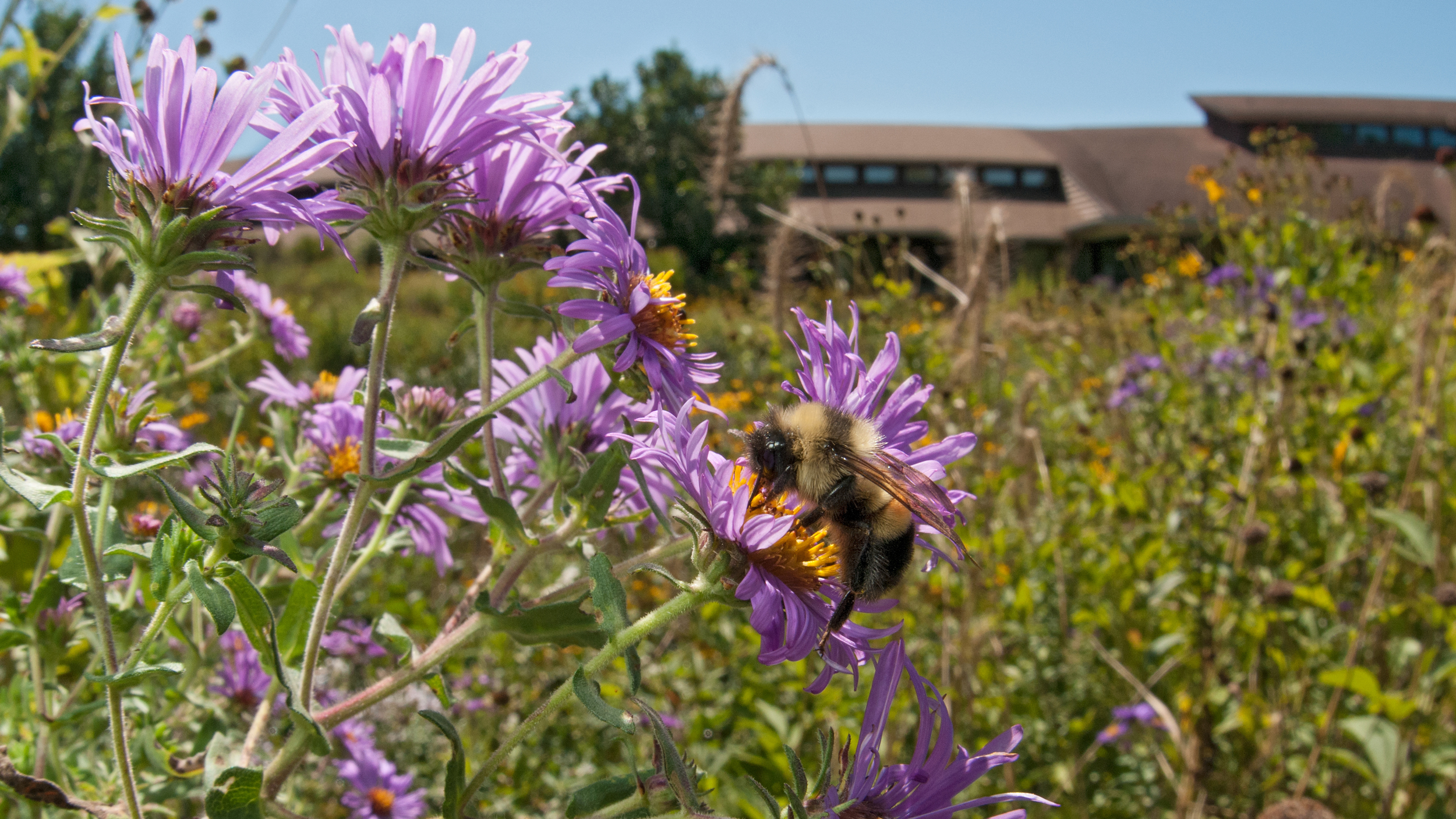
Learn to identify bumble bees by: 1. ordering Bumble Bees of North America: An Identification Guide, by Paul Williams, Robbin Thorp, Leif Richardson and Sheila Colla, 2014. Princeton, University Press; 2. downloading this online field guide and this one from Bee Spotter and 3. downloading these flashcards.
Participate in these citizen-science projects: Bumble Bee Watch and BeeSpotter.
Take the Pollinator Protection Pledge.
Finally, download Clay Bolt’s superb film A Ghost in the Making — about his successful search for and advocacy of the rusty patched bumble bee.
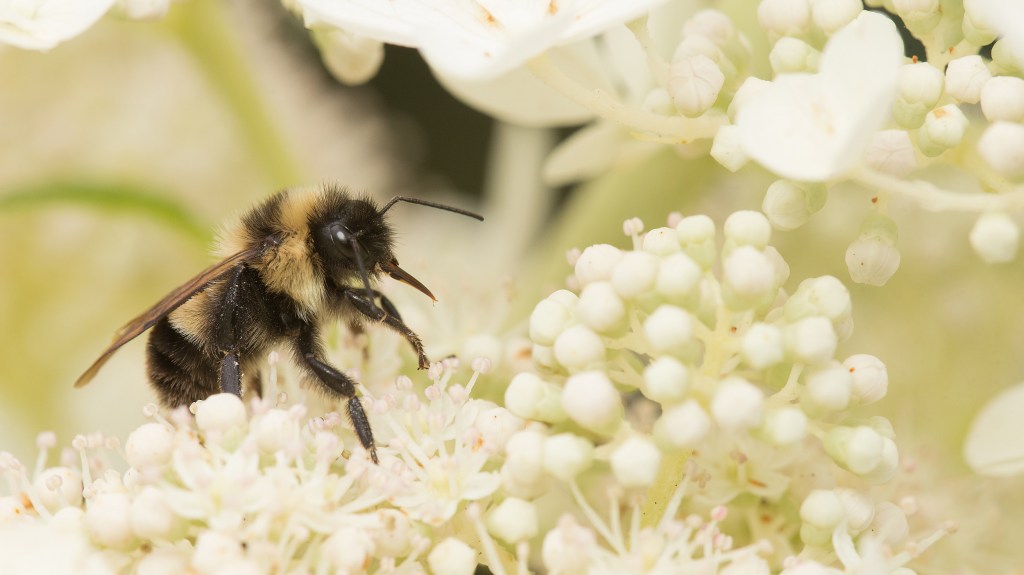



With out the bees the ecology is not going to work in safely manner, people need to be educated about it , so much ignorance .
Bumble bees are thriving in Cornwall, PA 17042. Honeybees, not so much.
I let native wildflowers grow around the edge of my yard where it is sunny. There is one kind of wildflower in particular which produces many tiny blooms and every year honeybees and bumblebees, along with other smaller flies, swarm over them. This is a very simple thing that can be done.
I live in suburban New Jersey. Have been planting many varieties of veggies and flowers that bees love…I have 13 different garden beds with a lot of variation on a small plot of land(.28 acres). I’ve had years of seeing few bees( both honey and bumblebees) and I’m happy to say the last two years have been sensational!! I’m not well acquainted with different species yet but plan to educate myself. Last year I found a local beekeeper and it seems there is a growing network of suburban beekeepers in my area. Still I’m very concerned for those species that are threatened… so will write local governments and try to move things from the bottom up…Grass roots movement!!
It’s very sad but unfortunately very true. Sometime man does very stupid things, without thinking of the consequences. As president of the Chicago Filipino-American Lions Club I will do my best to educate my fellow Lions about the Native Bumblebees plight. They need to learn about the hazards that Nionic Pesticides pose. I will also tell them what types of wildflowers to plant in their yards to help with Bee and Butterfly repopulation. It seems that Butterflies are also disappearing. Coincidence I think not!!!!!!!
I heart bees. Thanks for sharing this! <3
Hi, I just want to know we have a lot of bumble bees in my area. Their outside my door when I go out. We have a lot of wildflowers. As I walk past I try not to disturb them. I love watching them. I hope I can continue watching them for many years.
I live in Carroll County Md. and tried to let an area grow but my county govt. made me mow it. What can I do to make them stop?
I live in central Oklahoma. I have several tomato plants that flowered like crazy this year but have not produced one single fruit. I go out and check them every day. Not once have a seen a single bee this year. Usually, in years past, the plants are swarming with bees. None, absolutely none this year.
I have read the list of pollinator plants for the northeast from Xerces and did not see on the list the liatris plant. Liatris is a relative of purple loosestrife, a very beautiful purple flowering spike that is invasive in wetlands, and so its purchase is forbidden in MA. We are, however, able to buy liatris. We live in a suburb just west of Boston. A few years ago I bought one liatris plant, and it has multiplied to perhaps a hundred, with a purple spike of flowers on each. Our yard does not get full sun, so they do well in areas that are partially shaded every day. Every year I thin them out and give some to neighbors. Liatris flowers begin to open in June, and they are just about finished now on August 17, and during that whole time they are very attractive to bees. I do not know what kind of bees they are — the ones I have looked at are rather small, not large bumblebees. The bees are not aggressive, but we do not get too close to the liatris because there are always bees on the flowers.
I have found very few honey bees in my yard this year but lots of bumble and mason bees. We have Salvia, which they love. I am planting a fall flower and veggie garden so I’m hoping for lots of pollinators, as we have two hummingbird feeders as well.
I came in from a very hot day, over 100 degrees, to cool off. I turned on the TV and propped some pillows up and laid back. I felt a twig sticking me as it usually happens, so I sat up and felt around. All’s well. I lean back again but the twig has moved. Four times I did this and when I sat up, I heard some deep, deep buzzing. She was huge. Ms. Bumble Bee flew to a table where I captured her under a glass. I took her outside and released her. My wife counted 5 stinger holes on my back. I figured she hitched a ride inside on my back and every time I leaned back, I squashed her (softly, mind you) between the pillow and my back. and that’s why she stung me saying, ‘Get your big *** off of me’. Her stings didn’t hurt as bad as a honey bee and I was better in no time.
The article is great and there should be more concern from people. I have plants numerous plants just for them,they seem to love bee balm,butterfly bushes,Cardinal flowers,Sunflowers,Russian sage,and any others. My bee population is increasing daily and I am happy with that. They also seem to enjoy vegetable gardens,all these things do make a difference. It also benefits the hummingbird moths that I never knew existed.
It is absolutely disgusting the time it takes to awaken the goverment
Thank you for such an informative video. My grandson sparked my interest in the monarch butterfly from watching its metamorphis in his school. I joined our state native plant society and went to our local cooperative extension classes. One thing led to another…many native plants, shrubs, trees, etc. I planted. As I watched and learned, “plant it and they will come” is so true. Every summer there seems to be more. I am an older lady with medical conditions, but as long as I can dig, I will continue. I love the humming of the bumble bees. And as many times I have been so close to them…have never been stung! I don’t bother them, and they don’t bother me. Now, if I were to step on one barefooted, that might be a different story…I would sting also! I love nature and can’t imagine being without all critters. Even my husband notices if we have a new butterfly visiting. Grassed yards look so empty…unfortunately there are so many!
We had upward of 1000 hornets a few weeks ago swarming, the pest company said they were some type of cicada killers and would not be harmful. They don’t sting really. They have since moved on. I plant to attract bees here in SC, but these hornets eat protein, (i.e. gnats) and are less interested in flowers. I have horses and as a result gnats which the hornets eradicated! Huge hornets though. I have a few bumbles enjoying my flowers though not many.